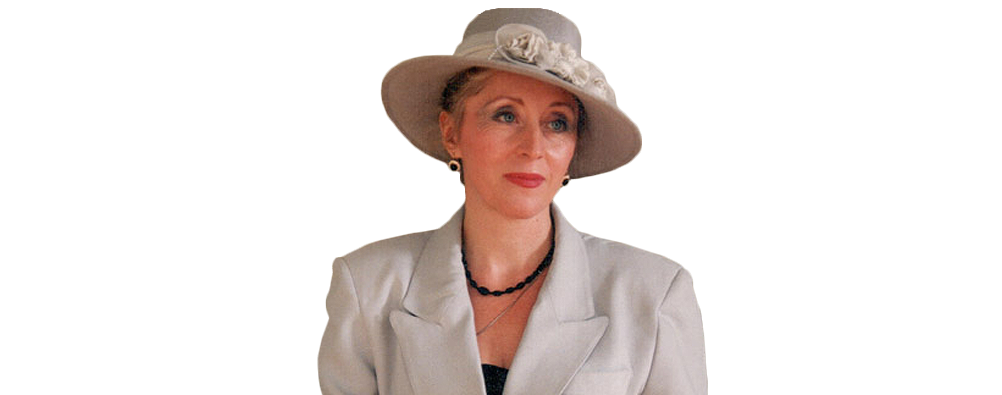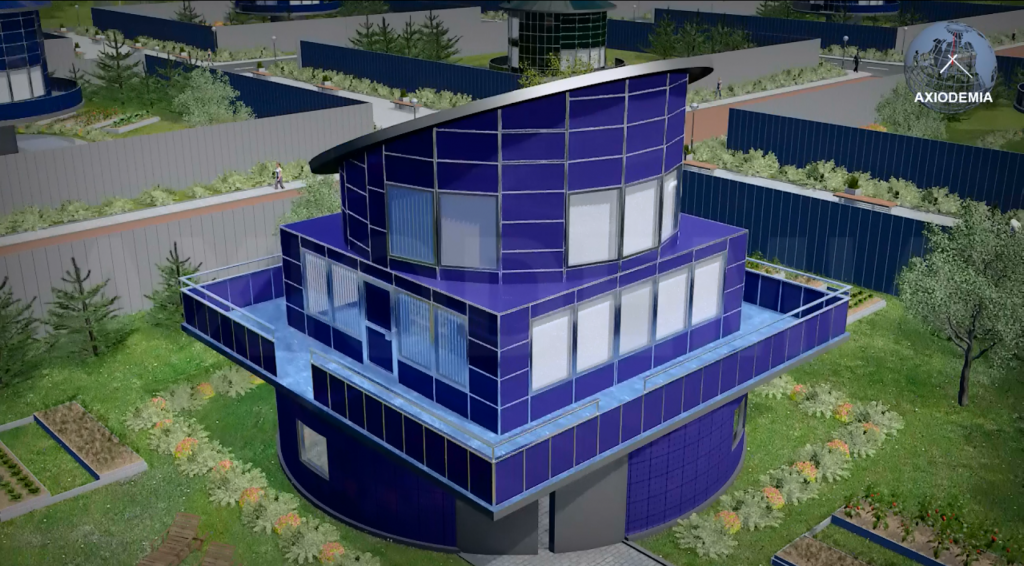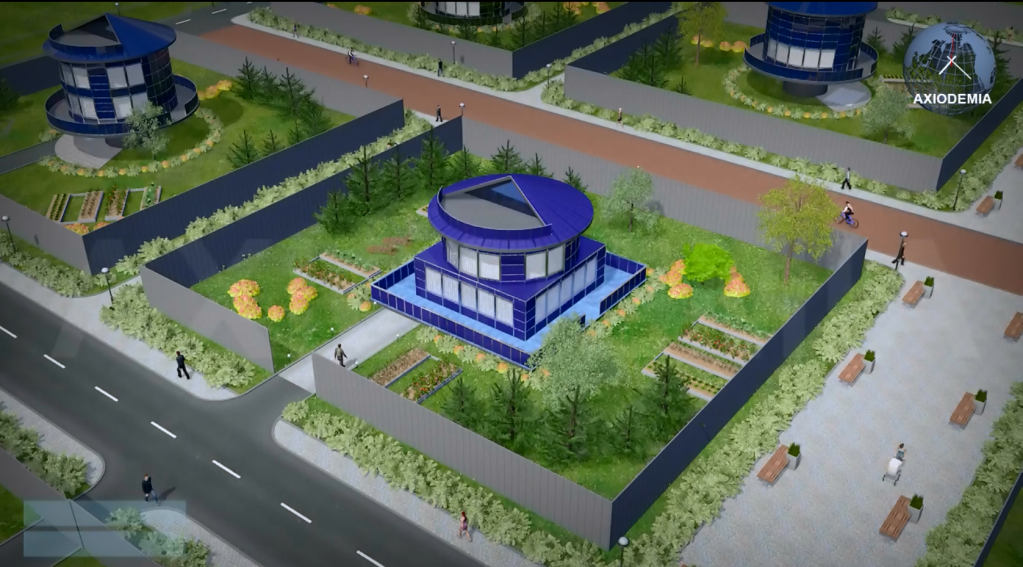Architecture

Fundamentals
A. Giloyan
Future development of architecture in the "Axiodemy" concept.
Architecture of the future will allow the construction of an ecological civilization in the form of urban aggregations without asymmetric proportions between provinces and megacities, ie the area will be divided into megacities designed in the shape of interconnected networks of molecular structure.
The main objective of this architectural concept of the "Axiodemy" project - solving the basic problems of an industrial society with innovative construction and architectural changes.
Implementation of this project will not require substantial budget costs. All improvements can be carried out today, using modern technology and development, as well as in the future.
The main objectives of this project are:
- The transition from megacities to ergonomic, eco-friendly cities, designed for comfortable living.
- Organizing the rational distribution of land and private property between citizens of both the state and the world community as a whole.
- Preventing transport congestion.
- Providing every citizen with an equal cost of living in the form of land, housing and the possibility to subsist in public dining rooms: it will allow to safely outlive a variety of social upheavals.
Megacities
The total city area is 1598 square km. The area of the city centre, where the apartment complexes are located, is 254 square kilometers. Surrounding the city centre there is a forest belt 2.5 km wide, which separates the centre and industrial buildings (factories, business enterprises, etc.). Then another forest belt - 2 km wide, separating the industrial area and private properties. At a distance of about 3-5 km away from private properties, between megacities, there will be located an area designated to supplying megacities with agricultural products. These spaces also include landscapes of wild nature.
The distance between cities of one state will be equal to approximately 100 - 200 km. In total, the city will be home for 1.5 - 3 million people. Among them only 0.5 - 1 million people, who own land within a radius of 10 - 12 km from the city borders, will have permanent registration. The rest of the residents of the city can be homeowners without permanent registration. Thus, every citizen of the megacity will be registered in the area where he/she owns a piece of land and a house, obtained upon reaching adulthood. The ratio between the permanently registered citizens, who own a piece of land around the city, and non-owners will be approximately one to two.
In countries with a population exceeding 100 million and large territories, the implementation of land reform, proposed by the concept of "Axiodemy" is possible in its original form: a city with a population of up 3 million inhabitants is the best option from both economic and demographic points of view.
Smaller states with large population can carry out this reform in a modified form: land intended for transferring to private property can be reduced by up to 70 sq.m. per person. Consequently, in this case, all the above mentioned parameters are reduced proportionally.
For countries with a small population and a sufficient area an option with cities with a population of three hundred to five hundred thousand can be used.
Private property system
SIC's (State Insurance Companies) are legally bound to allocate an area of land for the property: about 300 square meters for each citizen who has reached the age of consent. Meanwhile a maximum of 150 square meters is allocated for the construction of the house; the remaining area may be used for agriculture or left as green areas. In areas where climatic conditions do not allow the growing of fruit and vegetables in open ground, SIC enables the use of high-tech greenhouses. In addition, the functions of the insurance company will include providing people with primary housing at the expense of lending through the banking system (with the specified minimum and maximum loan amount for the construction of housing in accordance with one of the three categories of comfort) at a symbolic interest.
- The first level of comfort accommodation - 780 000 rubles. (2 floors 50 sqm each).
- The second level of comfort accommodation - 1.140 000 rubles. (2 floors 59 sqm each).
- The third level of comfort accommodation - 1 400 000 rubles. (2 floors 65 sqm each).
The structure of the house provides an opportunity to raise it above the ground level by means of a hydraulic mechanism, with an elevator inside, which connects all floors of the building and a cellar.
The owner can at his/her discretion raise the house to a certain level, which is comfortable for him/her, and rotate it to the desired degree, as well as use the area vacated under the house, for example, for a summer terrace, a temporary green space, etc. Besides that, the structure of the house allows the installation of automatically accessible ladders. With the help of computer technology people will be able to easily change the design of the facade: building cladding will not be a solid surface, but small fragments in the form of rotating cubes of different colours which simultaneously will be the elements, accumulating solar energy. This design is easily assembled and disassembled. The houses will be built with technologies of the future of glassy materials with the use of solar or wind energy, which will make them more fuel efficient and environmentally friendly.
It is obvious that the development of modern technologies leads to the appearance of virtual displays and automatic furniture in almost every house; it leads to the development of cyber medicine, extending life expectancy, the emergence of artificial intelligence and robots, space travel opportunities, etc. But it should be noted that these innovations do not solve existing social problems and serve only hedonistic satisfaction of human needs. It is socially oriented measures which will help the society to avoid potential crises. We believe that what is proposed by the "Axiodemy" concept of conversion of different spheres of life will contribute to overcoming and possible solution to these problems, given the fact that in the future the human species and their way of thinking will not change. If current tendencies of democracy development stay the same, humanity will always be in a state of instability, which can lead to chaos. On the other hand, if a person's thinking evolves, the need in society itself will disappear.
Each residential building basement provides an area 1.5 times larger than the area of the building foundation. During rain and snow artificial winds will be launched, which will direct precipitation to special water-storage facilities located in the basement of the house. Then the water will be filtered and used for individual needs.
In countries where property occupies 70 square meters, two-storey houses are built in the same way. For every floor of approximately 3 meters high the above-mentioned special area is given with the size of 38/42/45 square meters (depending on the level of comfort).
Every citizen has the right to choose his/her own level of comfort, on the grounds of personal wealth and may invest additional resources to implement an individual project for the house. The main condition is that housing under construction at its appraised value will not be less than the minimum loan amount, but must comply with the requirements of the first level of housing comfort and maximum height of 10 meters.
Along the perimeter of each house fences are compulsory provided, density and transparency is adjusted at the host's request, while their height should not exceed 3 meters.
Around the private pieces of land there is a state territory of about 5.5 meters wide, including the "green zone" (1.5 meters) and pavement (4 meters). This area can not be used for personal use. Under the pavements spiral heaters will be installed, which in the case of precipitation, will allow the road surface to dry quickly and prevent the formation of snow piles and ice. Also, the pavements can be covered with a semicircular glass canopy. This is necessary to ensure, regardless of the season, the possibility of movement on bicycles, rollerskates, etc.
Between the houses, besides pavements, there is a carriageway 4.6 meters wide. The rows of houses alternate (every 4.5 km) with two roads that pass through the social service systems, two-way and 6 meters wide each. Cars drive only on the roads which encircle the local train stations. The railway bed will be located in the centre between the strips of road, 7 m wide, 30 centimeters deep, and in the private sector its height will be reduced to ground level.
Social facilities include canteens, nurseries, grocery stores, amusement parks, entertainment venues and medical care stations. On the same territory there are stations for both passenger and freight trains necessary to ensure public transport links, as well as warehouses for freight trains. In the warehouses there will be taxi-robots capable of delivering goods to customers’ addresses. Based on its population, in order to ensure a well-developed infrastructure, such complexes will be located at a distance of 4.5 kilometers from each other throughout the private sector.
Religious buildings of any kind are not provided in the living quarters. Upon request, an owner can erect a building of this character on their private land (chapel, mosque, etc.), it should not exceed a height of 2.7-3 meters. It should be noted that such buildings can be erected exclusively for individual use, ie they do not have and can not have the status of a public institution. Public religious facilities will be located only in the cities themselves.
Every 350-400 meters between the private houses, along the streets, man-made water canals are provided, with depths ranging from 1.5 to 3 meters (automatically controlled) and about 7 meters wide. Retractible drawbridges to facilitate the movement over the canals are erected. Along these canals at a distance of 8 meters, on both sides, 40 meters wide avenues will be located. Water will be illuminated with LED lights that can change colour for aesthetics. At various times, the temperature of the water in the canals can be controlled to a desired degree. In summer they will be adapted for children to bathe: canals will be converted into sectional pools with the help of special overlaps or be reorganized into skating-rinks under automatic canopies. It is also possible to enhance the waterflow for the organization of various entertainments (for example, water-skiing, surfing, etc). Each canal will be named after famous historical figures.
Megacities are planned to provide underground, high-speed trains (both passenger and cargo), taxis and cars.
Underground parking spaces, interconnected by tunnels, are located under roads, sidewalks and green areas. Along the road special function markers will be placed, following which a car is automatically directed to an underground parking. Parking will be fully automated and the car-robot will be able to drive up to its owner, regardless of where he originally left it. One just needs to approach one of the special parking areas and using a certain password call up the car. The car will arrive through an underground tunnel or a normal road, paving a faster and more efficient route, taking into account the level of traffic on the highways. Each parking marker will have entry and exit routes to ease the movement of car-robots.
Thus, such a system of organization of private property is designed to have a beneficial impact on overcoming the ecological, economic and social crises at present and in the future.
Residential complexes system
The standard urban residential complex on average covers an area of 6.35 square kilometers: the size is based on the calculation that each person has at least 28 square meters. The complex is home to about 50 thousand residents. One complex consists of 20-25 residential houses about 40 floors each and includes educational institutions, hospitals, hotels, shopping malls and so on. The distance between the complexes is not less than 1000-1300 meters. Thus, 40 such complexes can accommodate 2 million people. This, taking into account citizens with private property (no more than 1 million inhabitants) and will make it the maximum variant of the population of the megacity.
Residential complexes are arranged in such a way that passenger trains are able to pass through them, and, if necessary, along. Buildings should be built on the principle, that the ground floor, designed for commercial and trading spaces, would protrude for about 6.4 to 7 meters around the perimeter of the house. On the first floor, 5.5 meters above the ground, the train station is located. The second floor is designed for canteens where the inhabitants of the house, registered in SIC of "Axiodemy" can have their meals.
The public dining area is arranged on the principle of self-service, which does not require the presence of a waiter.
Visitors take their seats at a table, which can be designed for a different number of people: from one to four persons. A touchscreen 25 cm long and 20 cm wide is attached to the table-board opposite each seat. With the help of the touchscreen the visitor can make an order - either standard or formed individually. Each tray for a standard order, depending on the type of food, marked with a special colour, and each individual order is assigned a corresponding number. Food delivery is carried out automatically. After completion of the order the tray will be coming out of the kitchen on the double belt. From it one can take a standard-type order and individually made orders are coming into numbered boxes arranged in a zigzag manner above the moving belt, from where the visitors can take their orders. After eating the utensils to be put on the special belts positioned at 40 cm below the belt with cooked food. Besides that the special orders can be transported on a special belt located under the floor and going straight to the table. The order is being lifted through the table leg and appears in front of the visitor. After eating utensils are sent back to the kitchen the same way. To maintain the cleanliness and provide information to visitors the special mobile manlike robots will be used in the hall.
All buildings are constructed using fireproof material. The foundation consists of three or more layers of concrete bars connected by hydraulic mechanisms on hinges so that the structure remains stable in case of any seismic activity. The architecture of future involves the construction of absolutely all types of buildings (both private and commercial) of liquid vitreous polymers cast in a monolithic manner and formed from the material to shape blocks of different sizes, enabling the construction of multistorey buildings (30-40 floors) in not more than 10-15 days.
The architecture of the future will surely vary: the buildings will differ in configurations and colours.
Each house will provide itself with the maximum amount of energy, even in the absence of sunlight due to the vitreous elements from which it is built. Thermal interchange is regulated by the owner of the premises: all the houses have helical heating systems.
A special "green zone", an area twice the size of the house foundation, is located around each dwelling house. At a depth below 90 centimeters to 1.5 meters are placed parking zones, combined into a single network using tunnels.
An important advantage of the proposed architecture is that houses with a different number of floors do not create difficulties for the implementation of the project. And for a change of scenery the residential part of the house - above the public dining room - rotates a full circle around its axis in five months. Thus the scenery outside the window will be different at the same time of the year.
It is important to note that the new structure of underground utilities in all areas of megacities facilitate the movement of vehicles in the parking networks, as in the future only the water system will run underground. Water, equated to valuable natural resources, will be expensive.
Sewage will be arranged in such a way that the waste, getting into the individual sewer system located in each house, will be processed at high temperatures and transformed into steam. This steam will rise up the pipe to the roof, where it will be purified. Thereafter it is cooled and converted into water again. This cyclic system partially eliminate the need to use the urban centralized sewage.
Industrial areas
In megacities the industrial zones will be located on the perimeter of the city centre, separated by 2.5 km wide forest belt. Their area will be 439 square km. Land allotted for business projects, will be available for rent for a maximum of 25 years according to the "Axiodemy" concept.
The process of construction in the industrial zones will not be regulated by strict architectural rules, ie, a businessman can realize his own project, subject to agreement with the State Insurance Companies.
The building project will include a number of possible configurations. Any businessman will always be able to automatically change the design, making it smaller in order to avoid paying higher taxes, which is very important when there are difficulties in the business.
The design will resemble a folding "accordion": it will consist of several rows of cubes, made of glass-like material which can accumulate solar energy. Building strength is achieved due to the fact that cubes of different sizes are interconnected by means of pins combined into a single hydraulic mechanism. This, together with a variety of colours, provides an aesthetic facade. Filled with air, the cubes turn around and transform into a solid construction of the fragments according to the designed programme, and the connecting pins are extended. The wall thickness depends on the number of rows of cubes.
Thanks to their original design floors can be developed in any form. If compressed the air leaves the cubes, the pins are automatically shortened and the whole construction folds. Therefore, the businessman can at any time add or remove a part of the building, for example, one or several floors, in this regard a number of cubes folds like an accordion so that if the floor originally was 3 meters high, after this folding it will be about 30 centimeters. Construction of buildings of this type is made in two stages: firstly everything necessary is prepared, and then the construction itself is completed, within 3-5 days on average. All the work will be carried out by robots. It is important to note that the proposed project is implemented regardless of weather and climate conditions: this is possible because glassy material contributes to maintaining the desired temperature.
When the lease of land expires for one reason or another, the building is folded to its original shape; businessman can pick up the construction and commercial property, the piece of land will be returned to the state.
In future, with the development of artificial intelligence technology and human competition with robots, a square meter of industrial space will be very expensive (the insurance companies will be forced to pay benefits to people who have lost their job), hence all businessmen will have to pay taxes on time. In order to support their business in the country a flexible system of taxation is created. Land is rented for 25 years, in the case of non-payment of taxes, a penalty is charged, directly affecting the business, it is imposed and as a result of the final test after three years, the lease term decreases in the range of one to three years, depending on the violation. In case of reduction of the lease, arrears are not considered to be paid up, are transfered to another three-year phase and continue to grow. And in the future if these trends continue, the lease term will be reduced to one year, and the land will become the property of the state. If the taxes are paid on time, the rent is "frozen" at the level reached at that moment. We believe that in this case the businessman gains impetus for business development and for the timely payment of taxes for the sake of "freezing" the lease. On the other hand, the interests of the SIC's will also be satisfied through the regular replenishment of their budgets.
Unlike urban residential complexes and private sector, industrial zones will have advantages in transportation. Electromagnetic railway slab on which the trains move and, accordingly, the station will be built 5.5 m above the ground floor (in large office centres, factories, etc.), and at ground level in areas where medium and small business are located. Social canteens are provided in large buildings and specially designated places of industrial zones.
All types of trains: freight, passenger, taxi-robots will move on the special slabs. Underground railways, airports, ports will be located within the boundaries of the industrial zone. Landing sites for private aircraft will be located on the roofs of the buildings.
Transport system in megacities
The mode of transport between megacities and inside them will be high-speed silent-running passenger robotic trains, connecting multy-storeyed and small complexes. In the city centre, they will operate at the level of 5.5 meters above the ground floor of multy-storeyed buildings.
The trains will operate in both directions on an electric laser slab. All trains are programmed to control their speed and distance between all trains depending on the relative position in motion. Train speed in residential complexes should not exceed 100 km/h. Most passenger stations are located directly in the houses themselves, as well as in educational institutions, hospitals, shopping centres, etc. All trains will pass through tunnels inside the building where the station will be located and, if necessary, on the perimeter of the house.
Stopping areas for taxi-robots are provide not only inside the building, but around it as well. Roofs of carriages are made of transparent fibers, and the whole train is made of lightweight, environmentally friendly material of light-grey colour. This colour gamma does not attract attention, and therefore has no negative impact on the psychological state of a person. Interestingly, the whole train, constructed of elastic material, is curved at the corners.
Each train seats about 30 people. The width of the car is 1.55 meters, length - 15 meters, height - 3.6 meters, while the height of legs - 1.4 meters. Passengers sit in comfortable adjustable chairs; a monitor displays the arrival time of each person - everyone is to take a seat in accordance with this information. The seats are located along the entire length facing in the direction of the train route, arranged in a checkerboard pattern equidistant from the wall-doors: it facilitates the embarkation and disembarkation of passengers, because the walls of the train stations open both on the left and on the right. A seat can be rotated in different directions at the convenience of the passenger. If neccessary train-robots - both passenger and freight - can be divided into several parts, depending on any route congestion. Each part of the set, with its division, has its own retractable legs. Unloaded part is separated from the set and is used on a different route; this avoids the situations when half-full trains operate.
Detached parts will be stored in premises situated on the perimeter of the house, until required. And when individual monitors with which every part is equipped, receives the signal of a full load, the parts are rejoined. After every 2 meters parts of freight and passenger trains can be rotated up to 90 degrees.
When the train stops, the car's wall lifts together with a platform wall: it facilitates the free movement of people. Passenger trains doors will be opened only in those parts, where passengers need to get off, or in those where free space is available, if there are passengers on the platform.
Platforms should be parallel to the cars - that is, built in a straight line. As for train traffic time intervals, they are flexible depending on the time of day and a particular area. Train stops will be exactly indicated on the slabs, so that the train sets and robot- taxis will be able to move sideways, horizontally, from the second row to the first and vice versa for embarking and disembarking passengers.
As for freight trains, they are designed for the transportation of bulky household items (eg for refurbishment).
Freight trains will be constructed in the shape of an inverted letter "U": such a structure will allow a passenger train to pass through it. Similarly passenger trains will be constructed: it will allow a robot-taxi to pass. Moreover, all types of electric trains will be put onto the hydraulic support. This enables trains to change their heights if necessary.
On arrival of freight and passenger trains at the station, their right legs will go up, the right side of the set will dock with the station's wall for support, so as not to interfere with the movement of passengers and the movement of other trains. When leaving the train station, the legs are lowered automatically.
Freight trains will be able to go down to platform level, where the cargo is, and then, if necessary, to go up again.
The length of freight trains - 18 meters, width - 3.2 meters, height - 4.85 meters, while the height of the legs - 3.65 meters. On the upper level of every roofed train there will be about 8-10 sections of different sizes, designed for transportation of materials for domestic use, industrial equipment, building materials, etc. Cargo compartments are up to 2 meters wide and 1.2 meters high. Each section will be numbered so that goods are delivered to the houses in succession. Unloading cargo trains will take place between the ceiling of the station floor and the floor of the dining-room; this gap height is 1.3 meters. It will accommodate a special automatic laser track upon which the goods will be moved to the elevators according to the addresses indicated on the electronic chips.
Elevators installed both inside and outside the house will move in both vertical and horizontal directions to ensure delivery of goods to the required floor. Each shipment will be individually numbered and packaged. Once items are automatically discharged from the elevator on the required floor, the train-robot receives the signal in the form of a password from the recipient that the goods have been delivered. In any misunderstanding with the delivery the robot calls in the security service. Each load is placed in special packaging made of lightweight and durable material that can be inflated and deflated; its weight - 3-6 kg, depending on the load. After the delivery the packaging is deflated and folded, then it is returned, after which the person is refunded its cost. Operation of the robot-train is fully automated ie human participation is not required. The route which the vehicles follow is downloaded into the operational system, so that each train knows its destination in advance. The route is made in such a way that the minimum distance between destinations is at least 500 meters: it is necessary to ensure that the train has time to get up to speed.
Thus, the number of trains needed to create a single transport network covering the entire city will be in operation. Along with this, transport routes of freight trains will not always conform to the routes of block trains.
Robot-trains check their loads for security while passengers are identified by their retinas and fingerprints. If a threat is detected, the train makes a warning signal summoning a check and removal of potentially dangerous objects or detaining a person if necessary.
There can be various alternative parameters: the width of the slab is reduced down to 7 m, and so the number of rows in the train traffic lanes will be reduced to one in both directions. Between the lanes there will be a space for the free movement of transport - for example, for overtaking and other maneuvers. In this case, the height of the trains will remain at the same level as in the previous version but their width will change: 2.2 m for freight trains, 2 m for passenger trains, 1.6 m for taxis.
In another modification the legs of electric trains are attached in the shape of the letter "T". In this case, during a stop at the stations, they will not be retracted. Each two-meter compartment will have a separate hydraulic legs which can be raised and lowered.
As mentioned above, in addition to freight and passenger trains, a shuttle robot-taxi will operate.
Its exemplary parameters are 2.3 meters in length, 1.2 meters in width and 1.35 meters in height. A taxi can be two-seater, four-seater or a six-seater. This type of transport every resident can order personally, according to an individual route. An important feature of the taxi is that it can move either on hydraulic supports (if it rides on an electric laser slab) or on wheels for road use: its hydraulic supports rise up and the wheels are lowered instead.
The future car-robot eliminates the possibility of accidents on the roads. We can assume that all the cars will be fully electrical. Future robotic cars will have the ability to transform their sizes for easy parking. Parking time in the cities will be limited, control of compliance with this rule will be carried out automatically. In special cases, exceptions can be provided for special services vehicles. While parking, the car-robot folds and reduces to the size necessary for a special elevator to move it to the underground parking. The car can be parked only in special places along the roads, that have special entrances and exits marked with appropriate signs. There will be about 100 such parking spots for every thousand cars. Thus, in the city of the future the number of cars parked on the street or near the building will be significantly reduced.
As previously noted, parking zones will cover the city underground network. They will be linked by means of underground tunnels: it is necessary to ensure that the car could, leaving the parking lot, drive up to the place where its owner needs it. 60-70% of the parking area will be located under the roads. Inside the covered parking area car-robots can be placed in several tiers. The entire parking floor will be divided into square mechanisms that will raise every vehicle to a certain tier, depending on availability.
Cars will be placed on the tiers in a checkerboard pattern. In addition, an automatic car wash will be installed into every single mechanism. Parking depth depends on the composition of the soil.
As for the repair of transport of the future, special car-repair zones will be created in which the correction of problems of any kind are carried out by robots-automechanics.
We assume that in the near future, people will need the services of motor transport less than now.
***
Of course, the transition to the new architecture should be carried out gradually. Concerning the movement of trains, our project could be implemented today using modern electromagnetic and other technologies. We expect that in due course time, trains will operate by means of a laser electric slab 30 cm thick and 7 meters wide, the installed laser guns are designed to direct moving vehicles with the help of beams. The magnetic field of the slab will reduce the stress on it due to the fact that vehicles will be repelled off this field. The laser electric slab operates at a constant temperature, regardless of climate changes. This slab also ensures the safety of trains, regardless of their speed and itinerary. Gradually, in cities of the future only electric robot-trains and robot-taxis will remain - affordable for residents and relieving them from the need to acquire private transport. Such a system of transportation will significantly reduce polluting emissions into the environment, which, of course, will improve the ecological situation.
The "Axiodemy" project is universal, ie implementation of the proposed reforms is possible in any part of the world, regardless of climate and landscape, which will contribute to scientific and technological innovation. The only condition for the realization of the proposed concept is the absolute support of the idea of an equal distribution of land under private ownership among the population of the state in order to avoid stratification in society.
Due to the fact that most of the Earth's surface area is water, and the population increases rapidly, man will actively explore the water space. According to our calculations, by 2060 the world population will reach 17 billion and in future the situation will only get worse, so that by the middle of the XXII century, the population will be about 40 billion. Under these conditions, an important role is played by the distribution of the space occupied by the oceans. Naturally, in this case, systems of underwater transport communications will be actively developed, creating artificial islands and underwater cities. In the underwater tunnels will pass high-speed trains. In connection with the solution of the problem of food provision for increased population, even taking into account the fact that, according to our assumptions, for the future of human nutrition, only half the amount of food will be needed, underwater farms and plantations will be created all over the place.
We believe that in the near future scientists will develop a technology which will allow the creation of dense gaseous shells at an altitude of about 8 km over the territories currently unsuitable for human life. They will protect the surface of the Earth from the Sun's rays or, on the contrary, due to the accumulation of solar energy will generate heat, which will maintain the year round average temperature at around 22 degrees Celsius. On this basis, we can assume that areas such as the Sahara, Gobi and other deserts will be subdued by man: fully functional cities will be created.
Despite technological progress, people will not lose their connection with nature. And yet, each period of time will throw its challenges, and the mankind will always be in a state of tension. This will lead to the fact that over time, the geographical map of the world can change, abolishing borders between the states, and the transition from democracy to an optimal political system becomes very likely, in which mankind will be able to avoid wars and other conflicts and to direct its potential to study the laws of the Universe.
Comments
|
Mark
22 January 2016 в 11:52
|
|
Many of your ideas about architecture are interesting, but is it not too much to decide that every one must have no more than 28 square metres?
|
Last comments
XX World Russian People's Council "Russia and the...
To get the best possible alternatives to above issues, just get in contact with Perspective...
admin 07:47, 16.07.2021
This support was later revealed to be known as Project xCloud, and it will allow...
Jason Beckham 15:54, 02.04.2019
Okay, but these questions they have to answer are testing just knowledge. How can you...
Martin 18:39, 23.01.2016
Many of your ideas about architecture are interesting, but is it not too much to...
Mark 11:52, 22.01.2016
I completely agree that we need a radical land reform, but how can you do...
Zoi 13:27, 21.01.2016
I can agree with the idea that science should be more important in our world....
Pavel 10:38, 21.01.2016
The three polar world in understandable, but I do not understand how you can reduce...
PJ 00:07, 21.01.2016
CONTEMPORARY POLITICAL SYSTEMS
What kind of political system can ensure the peace and the will of the people?...
Guest 12:31, 19.01.2016
Business interests are steering much of the politics instead of the interests of the people,...
Martin 22:46, 18.01.2016
What education has been used for today? Are kids around the globe being educated to fit...
Vyom 14:30, 15.07.2015













































Write comment